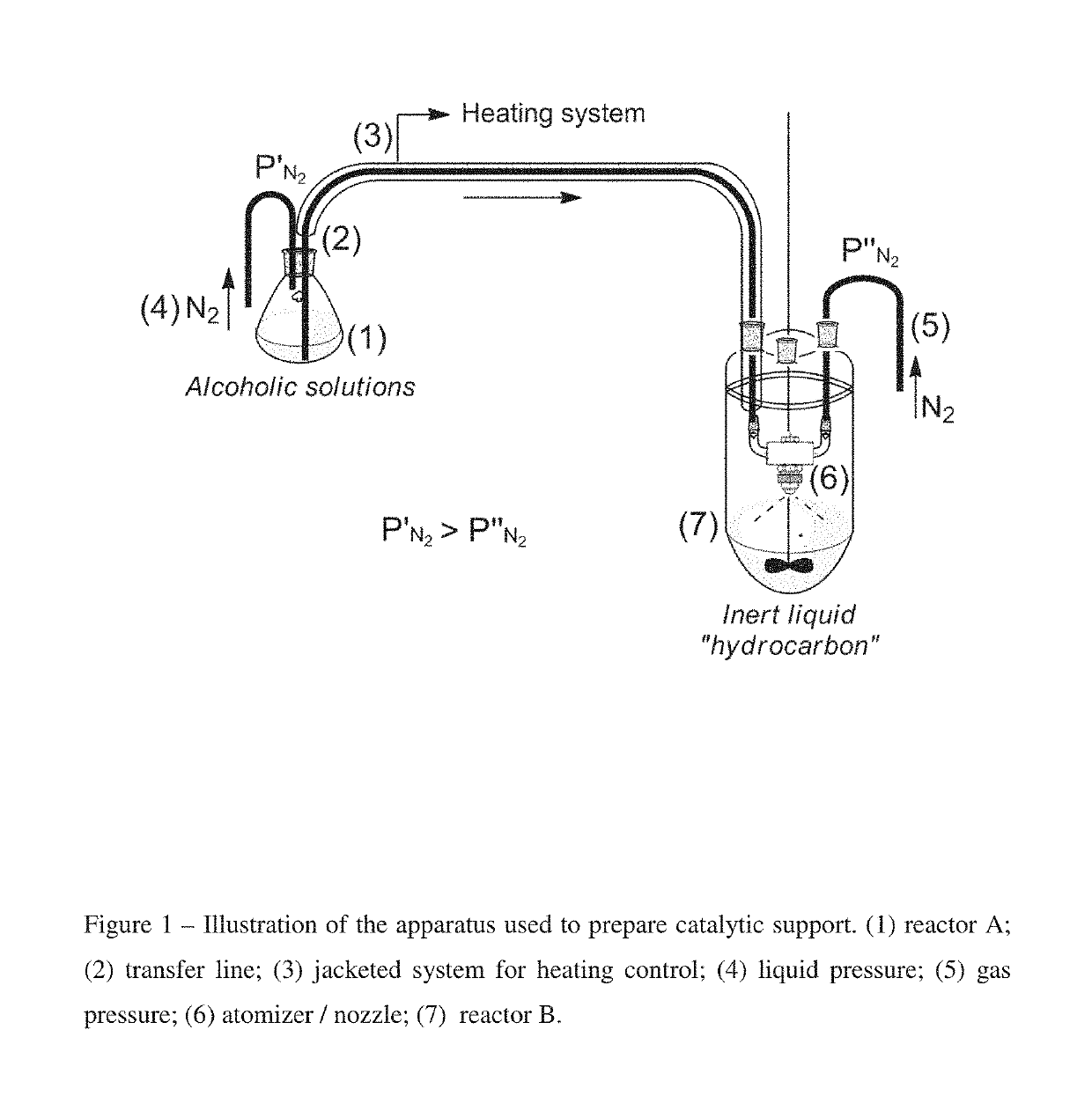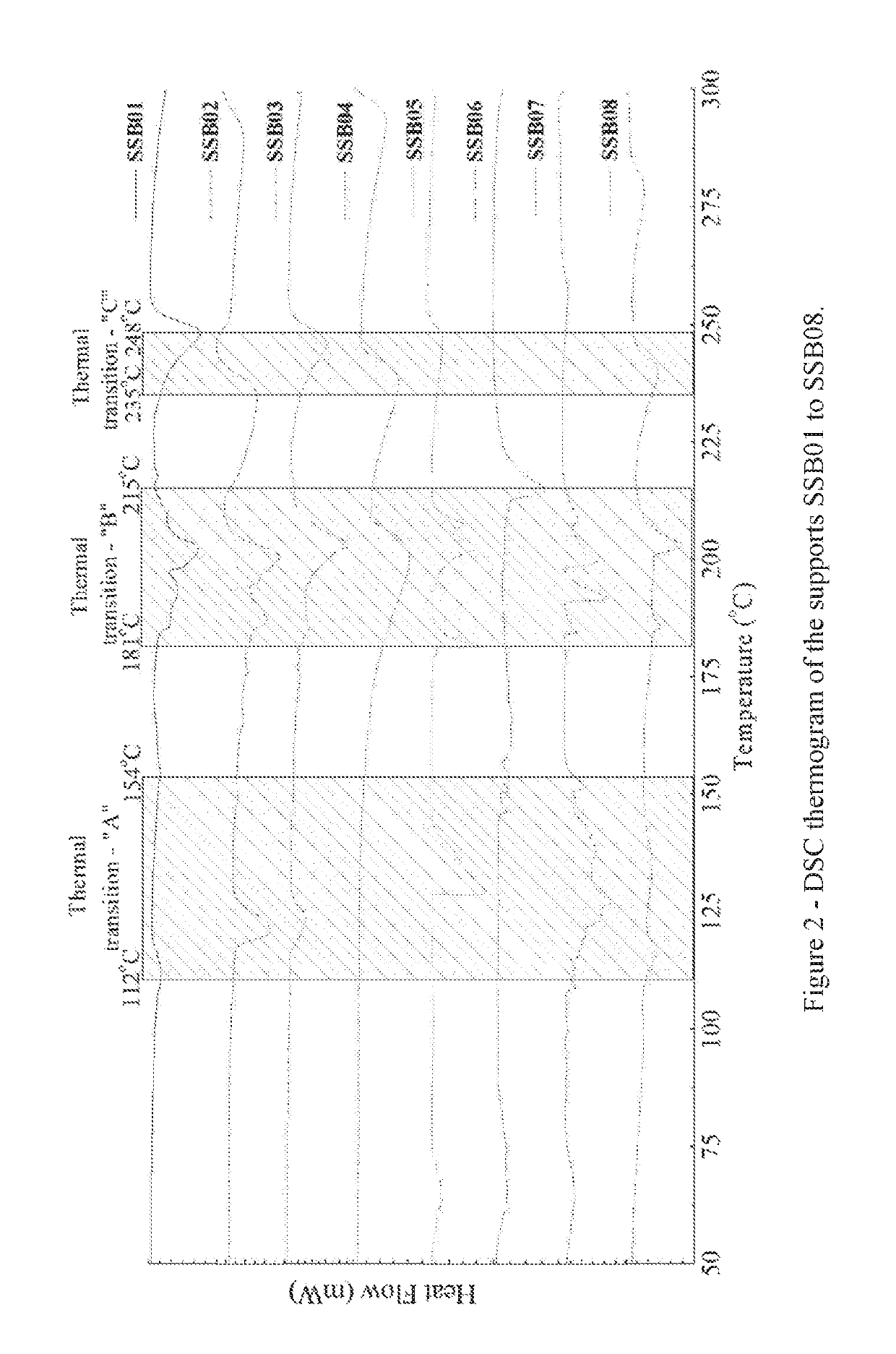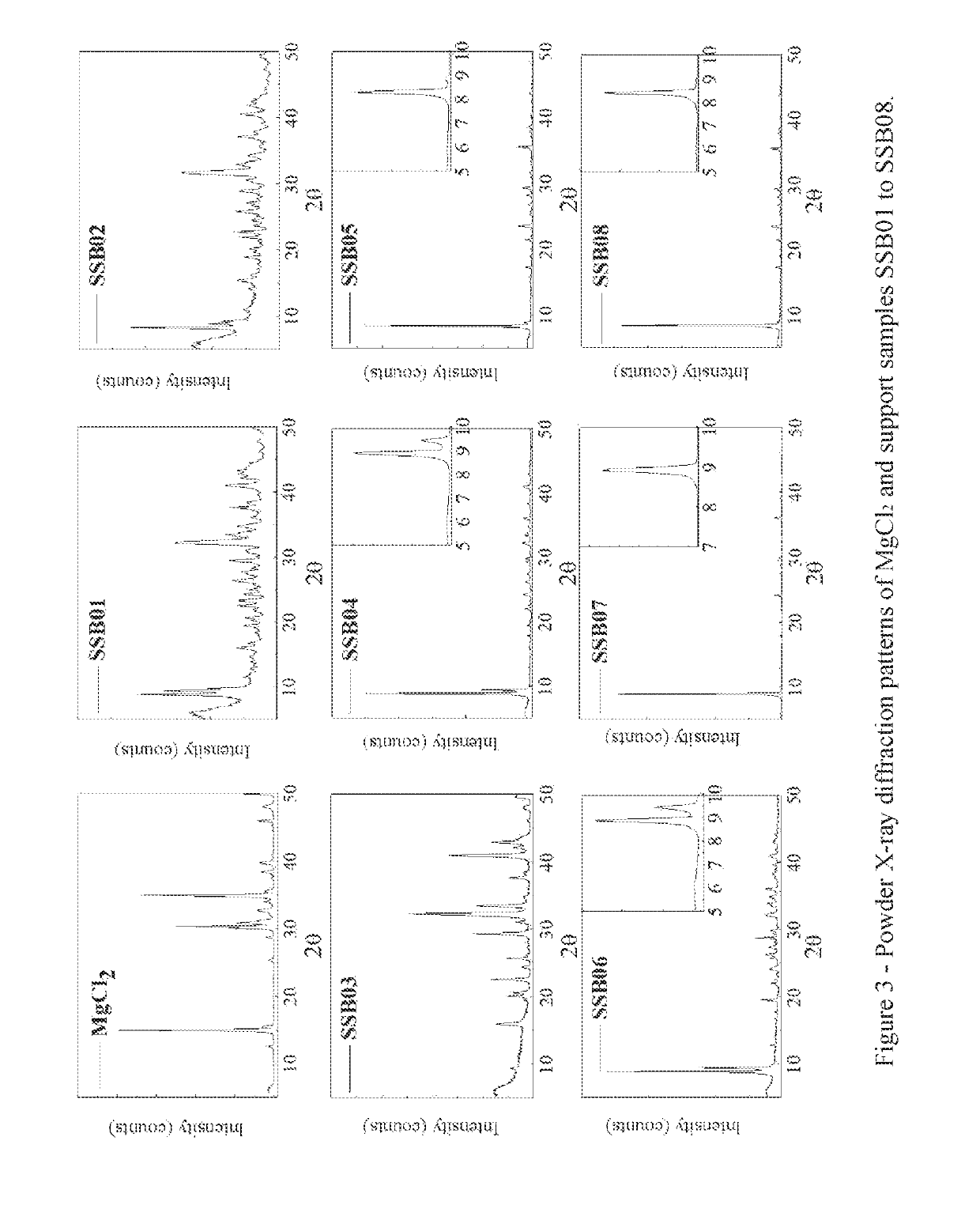Catalyst support and related processes
a technology of catalysts and support devices, applied in the field of catalyst support devices, can solve the problems of high solvent content in the final product, reducing the holding capacity of the solvent (vapor) in the gas stream, and hollow particles prone to fragmentation, and achieve the effect of prolonging the crystallization tim
- Summary
- Abstract
- Description
- Claims
- Application Information
AI Technical Summary
Benefits of technology
Problems solved by technology
Method used
Image
Examples
example 1
[0053]A solution of MgCl2 anhydride in ethanol at 4.0 wt % was prepared at room temperature. This solution was transferred through ⅛″OD jacketed tubing with controlled temperature connected to an atomizer (gas atomizer nozzle) placed inside a 5 L rounded-bottom flask to spray droplets of the alcoholic solution to dried isoparaffin at low temperature, approximately −20° C. The pressure applied in reactor A (1) and system (4) to transfer initial alcoholic solution to the atomizer was 0.7 bar, while the N2 pressure (5) was 1.0 bar. The resulting suspension of the particles precipitated in isoparaffin was stirred overnight at 350 RPM. After stirring, the mixture was left for 3 hours and then the supernatant was removed and 1 L of dried hexane was added to form a suspension with the resulting particles. The resulting mixture was transferred through cannula to a Schlenk flask followed by the filtration and recovering of the particles, which was washed several times with anhydride hexane a...
example 2
[0054]A solution of MgCl2 anhydride in ethanol at 12.2 wt % was prepared at 60° C. This solution was transferred through ⅛″OD jacketed tubing with controlled temperature directly to a 5 L rounded-bottom flask without the use of the atomizer. The alcoholic solution was transferred to dried isoparaffin at low temperature, at approximately −20° C. The resulting suspension of the particles precipitated in isoparaffin was stirred overnight at 350 RPM. After stirring, the mixture was left for 3 hours and then the supernatant was removed and 1 L of dried hexane was added to form a suspension with the resulting particles. The resulting mixture was transferred through cannula to a Schlenk flask followed by the filtration and recovering of the particles, which was washed several times with anhydride hexane and dried under nitrogen flow. All steps of this experiment were carried out under N2 atmosphere to obtain support sample SSB02.
example 3
[0055]The support catalyst was prepared as described in Example 2, followed by an additional step to remove the excess of ethanol from the obtained particles through a thermal treatment, as follows: the support was transferred to a Schlenk filter and kept under countercurrent nitrogen flow inside an oven for 1 hour at each temperature 40° C., 50° C. and, 60° C. to obtain support SSB03.
PUM
| Property | Measurement | Unit |
|---|---|---|
| temperature | aaaaa | aaaaa |
| temperature | aaaaa | aaaaa |
| temperature | aaaaa | aaaaa |
Abstract
Description
Claims
Application Information
 Login to View More
Login to View More - R&D
- Intellectual Property
- Life Sciences
- Materials
- Tech Scout
- Unparalleled Data Quality
- Higher Quality Content
- 60% Fewer Hallucinations
Browse by: Latest US Patents, China's latest patents, Technical Efficacy Thesaurus, Application Domain, Technology Topic, Popular Technical Reports.
© 2025 PatSnap. All rights reserved.Legal|Privacy policy|Modern Slavery Act Transparency Statement|Sitemap|About US| Contact US: help@patsnap.com



